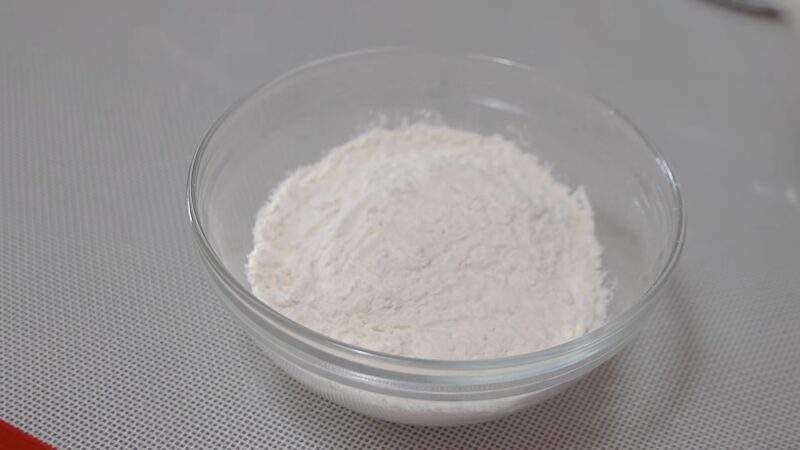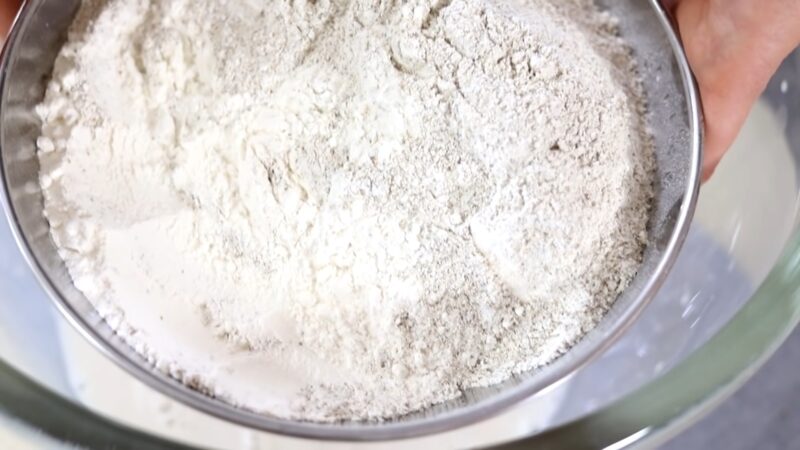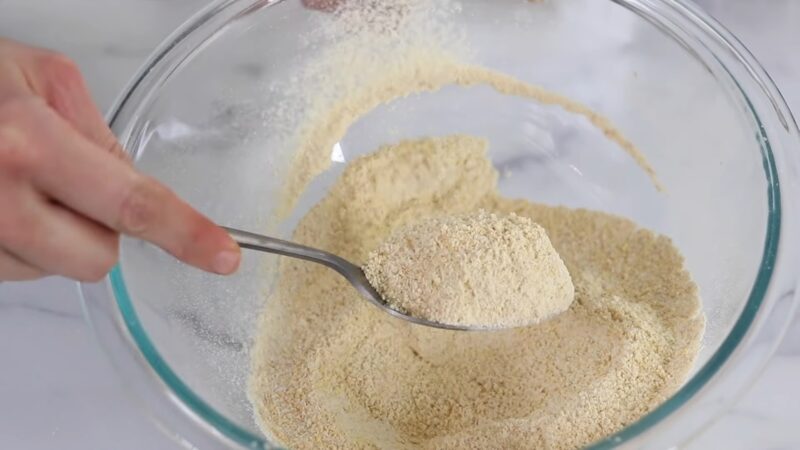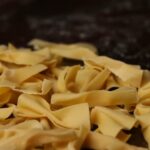Before we dive into the heart of the matter, let’s lighten the mood with a little kitchen humor. What kind of flour should you use to make a cake for a cat? Well, that would be all purr-puss flour! Now, while our feline friends might appreciate that, we humans need a slightly different set of flour for our pasta-making endeavors.
In this comprehensive guide, we’ll delve into the top 10 flours that will transform your homemade pasta from good to exceptional. Each of these flours brings its unique characteristics to the table, influencing the texture, flavor, and nutritional value of your pasta. So, whether you’re a seasoned pasta maker or just starting your culinary journey, this guide is sure to offer valuable insights. Let’s embark on this exciting pasta-making adventure together!
1. Durum Wheat Semolina

Semolina, derived from durum wheat, is the traditional choice for pasta. Its high protein content and gluten strength create a firm and elastic dough, resulting in pasta with a delightfully chewy texture. It’s the secret behind the beloved al dente bite! This golden-yellow flour is also responsible for the classic color of many pasta varieties. Whether you’re crafting spaghetti, fusilli, or lasagna, semolina flour will provide the robust structure and the perfect bite that pasta lovers crave.
2. ’00’ Flour
This Italian flour, also known as doppio zero, one of the most popular types, is finely milled, resulting in a silky texture. It’s perfect for making delicate pasta shapes like fettuccine or ravioli. Its lower protein content makes for a tender, light pasta that’s a joy to eat. The ’00’ refers to the grind size and indicates that it’s among the finest flours you can buy. If you’re aiming for pasta that’s light, airy, and cooked to a tender finish, ’00’ flour is your best bet.
3. All-Purpose Flour

Don’t underestimate the humble all-purpose flour. It’s a reliable choice for beginners, offering a balance of protein and starch that works well for a variety of pasta types. It’s versatile, readily available, and yields a satisfyingly tasty pasta. While it may not provide the same level of texture or flavor as some of the more specialized flours, its accessibility, and ease of use make it a great starting point for novice pasta makers.
4. Whole Wheat Flour
For rustic, hearty pasta, whole wheat flour is your go-to. It’s rich in fiber and nutrients, adding a depth of flavor and texture to your pasta. It pairs wonderfully with robust sauces like Bolognese or pesto. Whole wheat pasta has a more substantial, chewy texture and a nuttier flavor compared to pasta made with refined flour. It’s an excellent choice for those seeking a healthier, more wholesome pasta option.
5. Spelt Flour

An ancient grain, spelt flour brings a nutty flavor to your pasta. It’s a great alternative for those looking for a wheat flour substitute. It’s also rich in nutrients, making it a healthy choice for your homemade pasta. Spelt flour has a slightly sweet and mild flavor, and while it does contain gluten, it’s often easier to digest than modern wheat, making it a favorite among those with dietary restrictions.
6. Rye Flour

Rye flour is another excellent choice for adding a unique flavor profile to your pasta. It has a slightly sweet and earthy taste, which pairs well with strong, savory sauces. However, due to its lower gluten content, it’s best used in combination with other flours. Mixing rye flour with high-gluten flour like durum or bread flour can help achieve the right balance of flavor and texture.
7. Buckwheat Flour

Despite its name, buckwheat is not a type of wheat but a relative of rhubarb. It’s gluten-free and has a distinct, robust flavor. Buckwheat flour is traditionally used in making pizzoccheri, a type of short tagliatelle from northern Italy. Its strong, earthy flavor makes it a standout choice for pasta, and it’s a fantastic option for those following a gluten-free diet.
8. Rice Flour

Rice flour is a fantastic gluten-free option. It creates a tender pasta with a slight chewiness. It’s commonly used in Asian noodles, but don’t let that stop you from experimenting with Italian pasta shapes! Rice flour pasta has a delicate texture and a subtle flavor that pairs well with a variety of sauces. It’s also an excellent choice for those with gluten sensitivities.
9. Chickpea Flour

Chickpea flour, or garbanzo bean flour, is another gluten-free alternative. It has a rich, slightly nutty flavor and is packed with protein. It’s traditionally used in making socca, a type of flatbread, but it can also be used to make unique and flavorful pasta. Chickpea pasta is a favorite among those following a gluten-free or grain-free diet, and its high protein content makes it a nutritious choice.
10. Kamut Flour

Kamut is an ancient grain with a rich, buttery flavor. It’s higher in protein than modern wheat, resulting in a strong, elastic dough. Kamut flour is perfect for making sturdy pasta shapes like rigatoni or penne. Its rich, nutty flavor and golden color make it a standout choice for pasta. Plus, it’s packed with nutrients, including protein and dietary fiber, making it a healthy and delicious choice for your homemade pasta.
FAQS:
Can I use self-raising flour for pasta?
Self-raising flour is not typically used for pasta. It contains baking powder, which can make the pasta dough rise and result in softer, less chewy pasta.
Are there gluten-free flours suitable for pasta making?
Yes, there are several gluten-free flours that you can use for pasta making. These include Buckwheat, Rice, and Chickpea flour. Each of these flours brings a unique flavor and texture to your pasta.
How does the choice of flour affect the cooking time of pasta?
The type of flour can influence the cooking time of pasta. Pasta made with high-protein flours like semolina or bread flour typically takes longer to cook than pasta made with lower-protein flours like ’00’ or all-purpose flour.
Can I mix different flours when making pasta?
Yes, mixing different flours can create unique flavor profiles and textures. For instance, Rye flour, due to its lower gluten content, is often mixed with other flour for pasta making.
What is the nutritional difference between these flours?
Each type of flour has its unique nutritional profile. For example, Whole Wheat flour is rich in fiber and nutrients, while Chickpea flour is packed with protein. The choice of flour can significantly impact the nutritional value of your homemade pasta.
How does the choice of flour affect the pasta’s flavor?
The type of flour you choose can greatly influence the flavor of your pasta. For instance, Spelt and Rye flours bring a nutty flavor, while Kamut flour imparts a rich, buttery taste to your pasta.
Are there specific flours for specific types of pasta?
Certain flours are traditionally used for specific types of pasta. For example, Durum Wheat Semolina is often used for making pasta shapes that require a firm and elastic dough, while ’00’ flour is ideal for delicate pasta shapes like fettuccine or ravioli. However, feel free to experiment and find what works best for you!
Final Words
In conclusion, the world of pasta-making is vast and diverse, with each type of flour offering its unique characteristics. Whether you’re a seasoned pasta maker or a beginner, I encourage you to experiment with these different flours. You’ll be amazed at the variety of textures, flavors, and nutritional benefits they can bring to your homemade pasta. Happy cooking!


